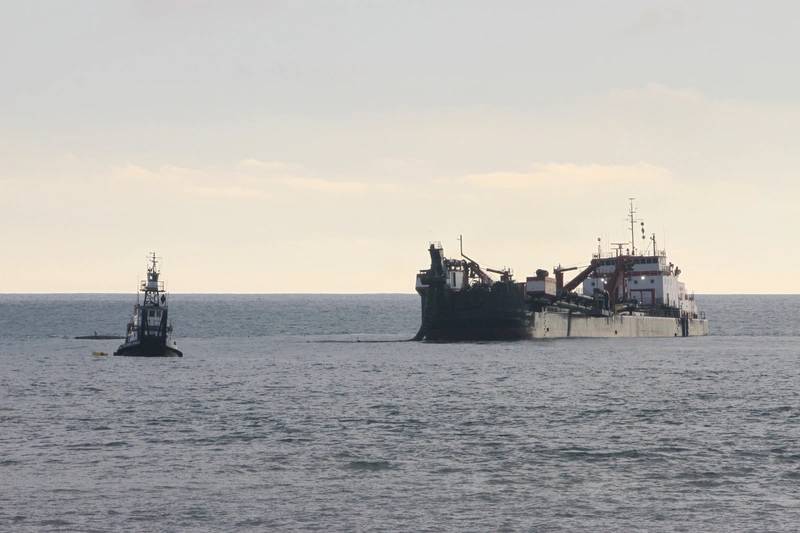A dredging and sand replenishment project at Southern California’s Solana Beach is about halfway complete, the U.S. Army Corps of Engineers said.
The project, which reduces coastal storm damage and erosion along a 7,200-foot-long stretch of shoreline, includes construction of a 150-foot-wide beach fill using 700,000 cubic yards of compatible sediment.
Operations started Jan. 17 and are on schedule to wrap up in mid-March, according to Caleb Lodge, coastal engineer with the Corps’ Los Angeles District.
“They’re doing about seven or eight loads a day, and they only had a few days of downtime due to weather so far, but that hasn’t impacted them too much,” Lodge said of the contractor, Manson Construction.
Lodge said the contractor is employing a split-hull trailing suction hopper dredge, called the Bayport. The vessel collects between 15,000 and 20,000 cubic yards of sand per day from the offshore borrow site, from which the vessel pumps it ashore through a connected pipe. Once deposited on the beach, the sand is spread throughout the designated stretch of shoreline with bulldozers.
The work follows the joint signing of the project partnership agreement for shoreline protection for Encinitas and Solana Beach that occurred in May, celebrating the collaboration between local, state and federal partners to get the project started.
The Corps received more than $30 million for federal funding for the initial construction of both projects in fiscal year 2022 from the Bipartisan Infrastructure Law. The initial construction cost is about $50 million with a 65/35 cost share between both cities.
In addition to the initial construction, the project will include 13 beach renourishments over a 50-year period at about $417 million, with a 50/50 federal-sponsor cost share.
Although the work is still in progress, Lodge said the beach’s transformation so far is unmistakable.
“There was almost no dry beach initially,” Lodge said. “Before they started the beach nourishment, at high tide you could go down there and wouldn’t really be able to walk in either direction from Fletcher Cove because it was fully inundated.”
That’s now all changed.
“We’re making great progress,” Lodge said.
This news is republished from another source. You can check the original article here








